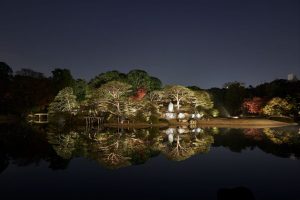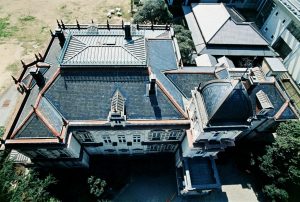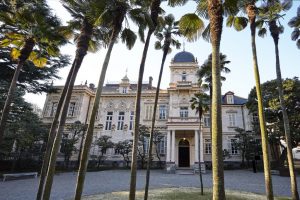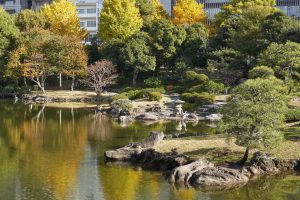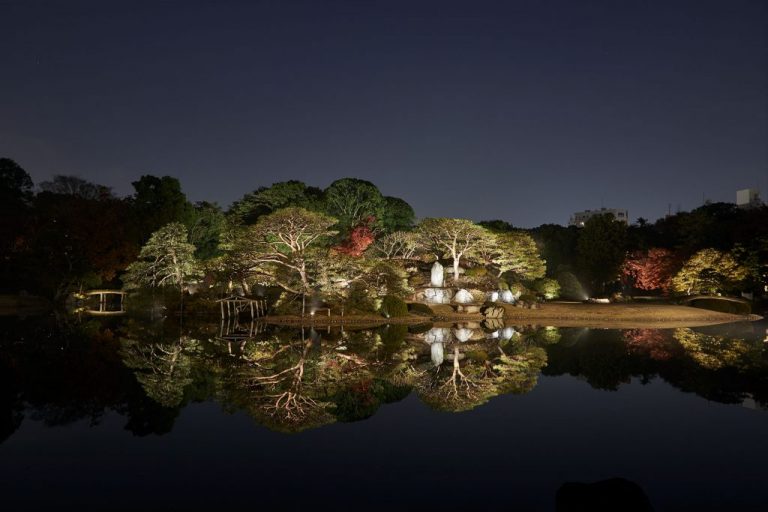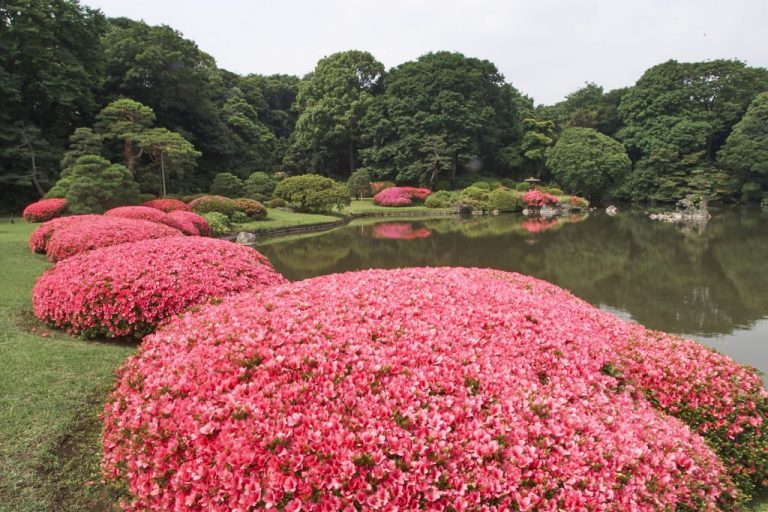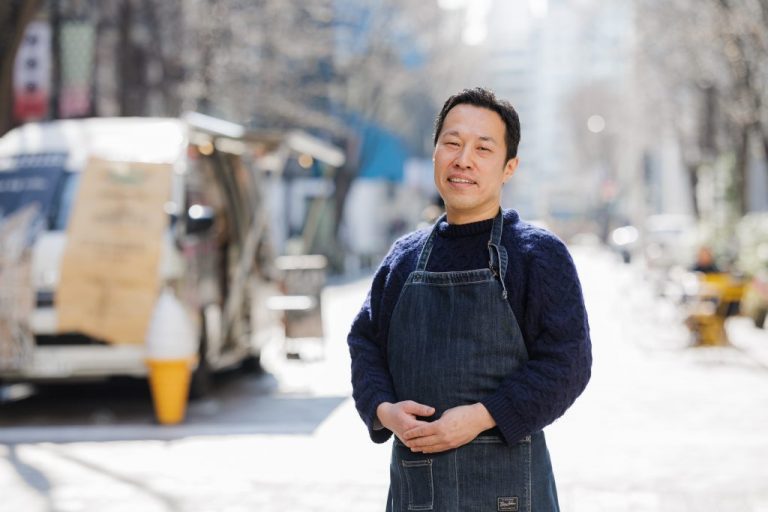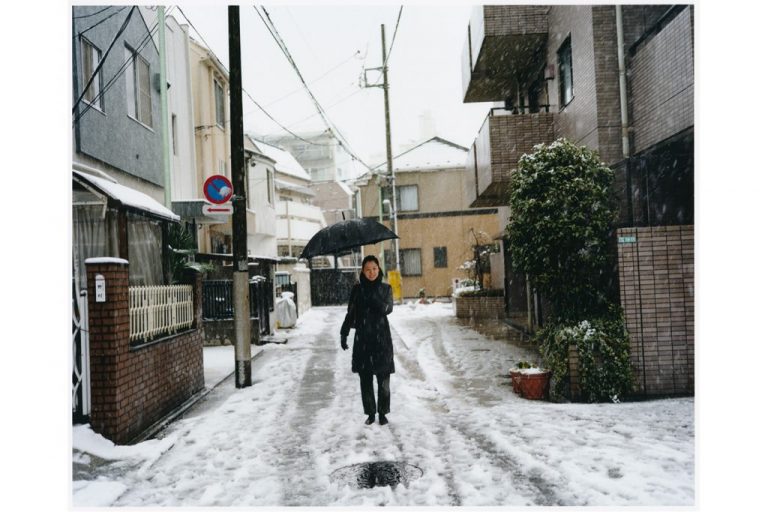Rikugien is easily accessible, about a 10-minute walk from Komagome Station. During special periods, the Someimon gate opens for a limited time and is conveniently located just across the intersection. Originally the site of a secondary residence granted to Yanagisawa Yoshiyasu (1658–1714), a favored daimyo of the fifth shogun, Tokugawa Tsunayoshi, Rikugien was once part of an estate belonging to the Maeda, clan of Kaga.
While Rikugien is best known for its weeping cherry blossoms in spring and vibrant autumn foliage, a deeper appreciation of its design reveals a garden far more complicated than it first appears. When I heard I would be visiting, my first thought was, “At last, the time has come.”
A theme park of waka poetry: Rikugien Gardens (Part 1)
In Search of Tokyo Serenity
No.010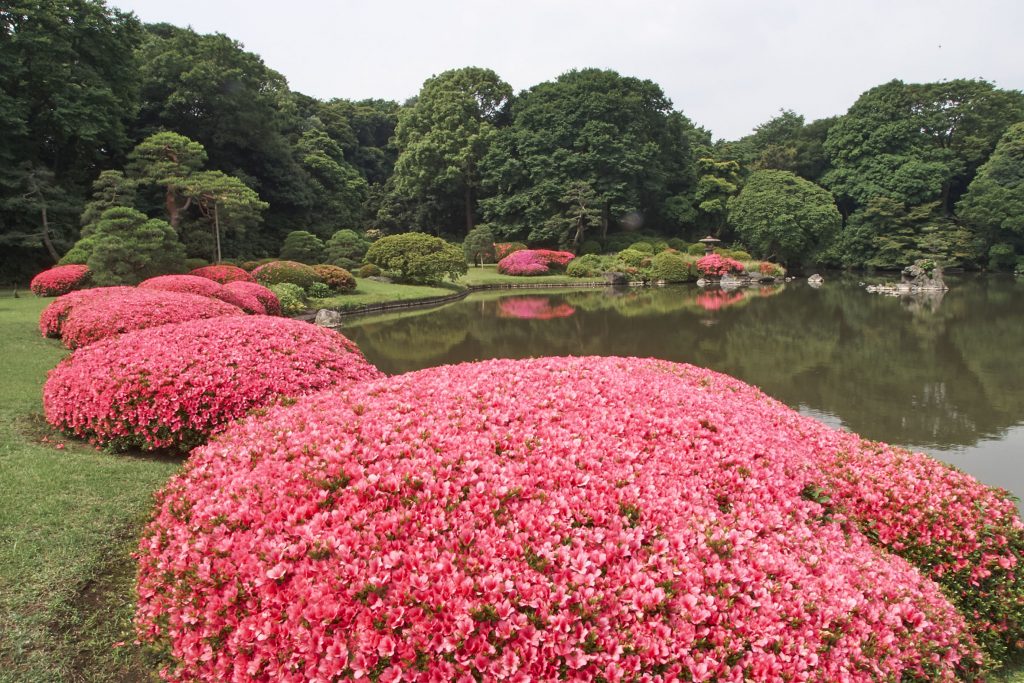
This series offers an engaging exploration of Tokyo’s gardens, featuring photographs by Norihisa Kushibiki and commentary by Miho Tanaka, curator of the Tokyo Metropolitan Edo-Tokyo Museum. In this instalment, we focus on Rikugien Gardens, a popular destination during spring for its weeping cherry blossoms, and autumn foliage season. The first part of this two-part feature introduces the gardens’ distinctive worldview and the craftsmanship behind their design, which has earned them the reputation of a “theme park of waka poetry.”
Photographs: Norihisa Kushibiki
Commentary: Miho Tanaka (Curator, Tokyo Metropolitan Edo-Tokyo Museum)
Cooperation: Tokyo Metropolitan Park Association
A recreation of the scenic Wakanoura
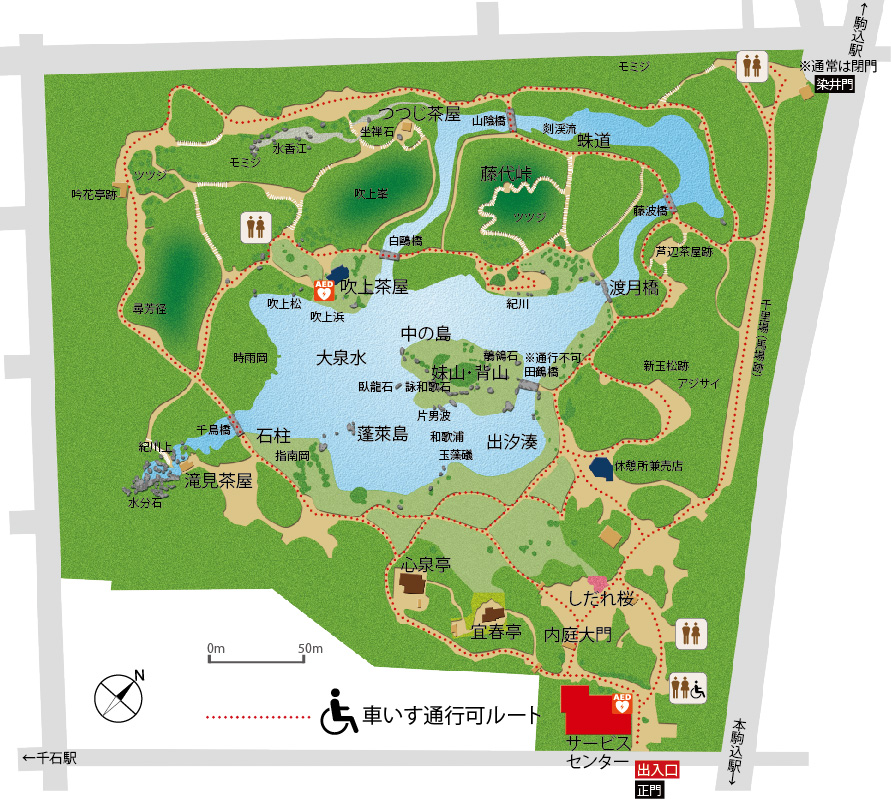
The concept behind Rikugien Gardens is the embodiment of the poetic world that Yanagisawa Yoshiyasu cherished. Initially, the name of the gardens was called as “mukusa no sono.” This name originates from the Kokin Wakashu poetry anthology, which refers to six poetic styles derived from the Chinese classification system.
The landscape of Rikugien is designed to evoke the scenic beauty of Wakanoura, Kumano, and Yoshino—celebrated places in Wakayama Prefecture that have been immortalized in classical poetry.
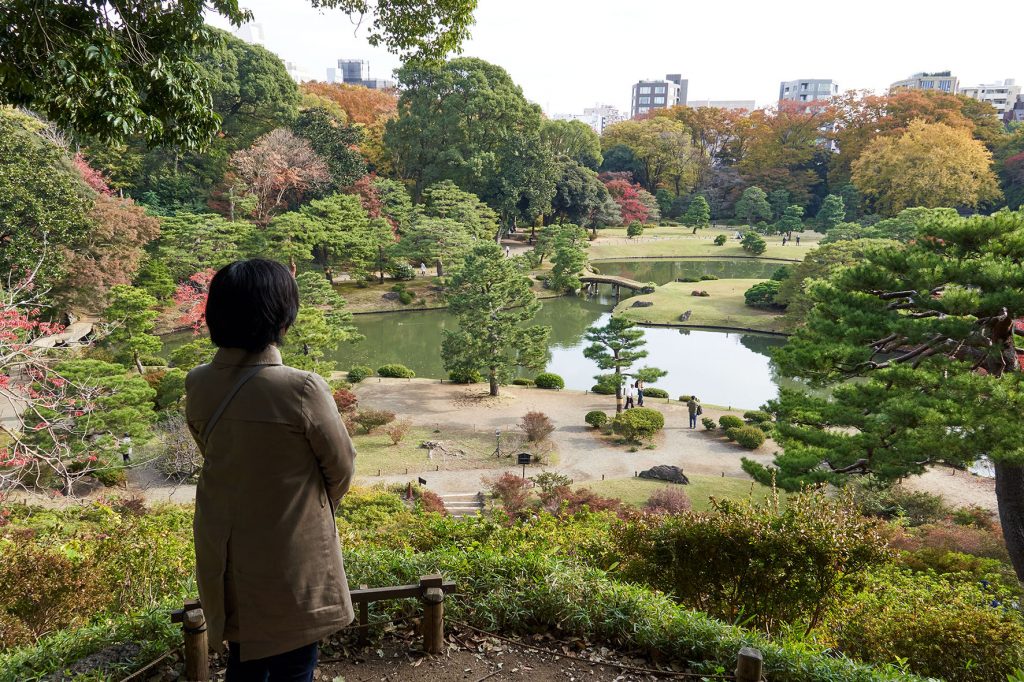
Fujishiro-toge 藤代峠 is the highest artificial hill in Bunkyo-ku, standing at approximately 35 meters. (In Wakayama Prefecture, along the Kumano Kodo pilgrimage route, there is a similarly spelled 藤白峠Fujishiro-toge.) From this vantage point within Rikugien, you can see azaleas planted throughout the garden.
This is just my speculation, but about a 10-minute walk from Komagome Station, on the opposite side, there is a monument called the “Somei Ueki no Sato Hi” (Somei Nursery Memorial). During the Edo Period, this area was a hub for nurseries, where azaleas and satsuki rhododendrons were extensively cultivated. It is possible that trees and shrubs from this nursery were used in the construction of Rikugien.
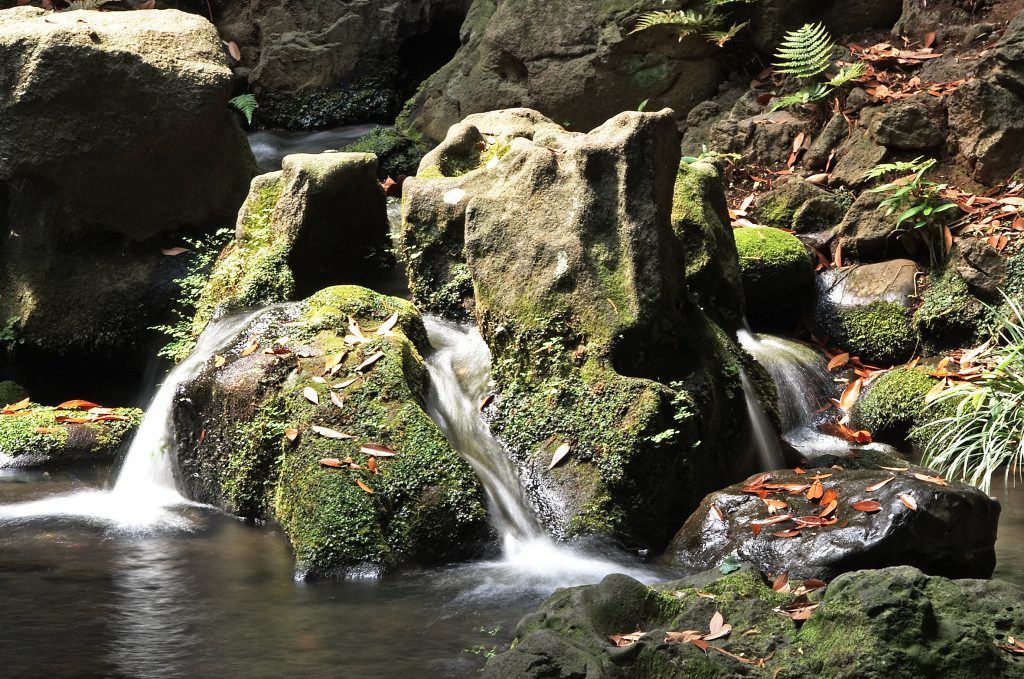
From “Tokyo Vintage Gardens”
The stream flowing from the Takimi-no-chaya teahouse area is a recreation of “Kinokawa” river (in Wakayama). During the Edo Period, water was drawn from the Senkawa Aqueduct to create this artificial flow, which was designed to resemble the Kinokawa River and lead into Daisensui large pond of Wakanoura. The large rock placed here is called “Mizuwakeishi” (water-dividing stone), which beautifully splits the stream into two directions. This style of naturalistic waterfall representation can also be seen in other gardens, such as Koishikawa Korakuen.
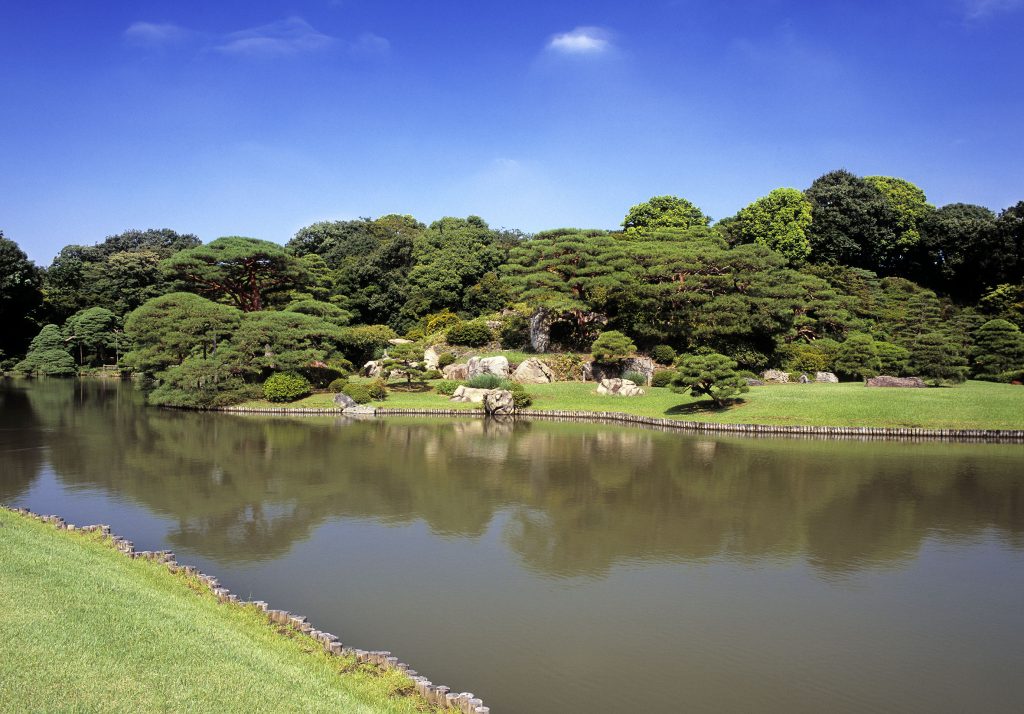
From “Tokyo Vintage Gardens”
The central island in Daisensui large pond represents “Imo no yama” and “Se no yama,” recreating Imoseyama, a well-known scenic spot in Wakanoura. In many gardens, Nakanoshima is meant to Horaijima. Rikugien also features a rock formation representing Horaijima, but this element was added in the Meiji Era when the Iwasaki family took ownership of the gardens.
To the southwest of the Fukiage-chaya teahouse lies “Hanatofukomichi,” a section designed to resemble the mountains of Yoshino. It was once planted with cherry trees, and a stream known as Suikonoe used to flow through it. In previous nighttime illuminations, blue lighting was used to recreate the effect of flowing water.
Eighty-eight scenic spots of waka poetry
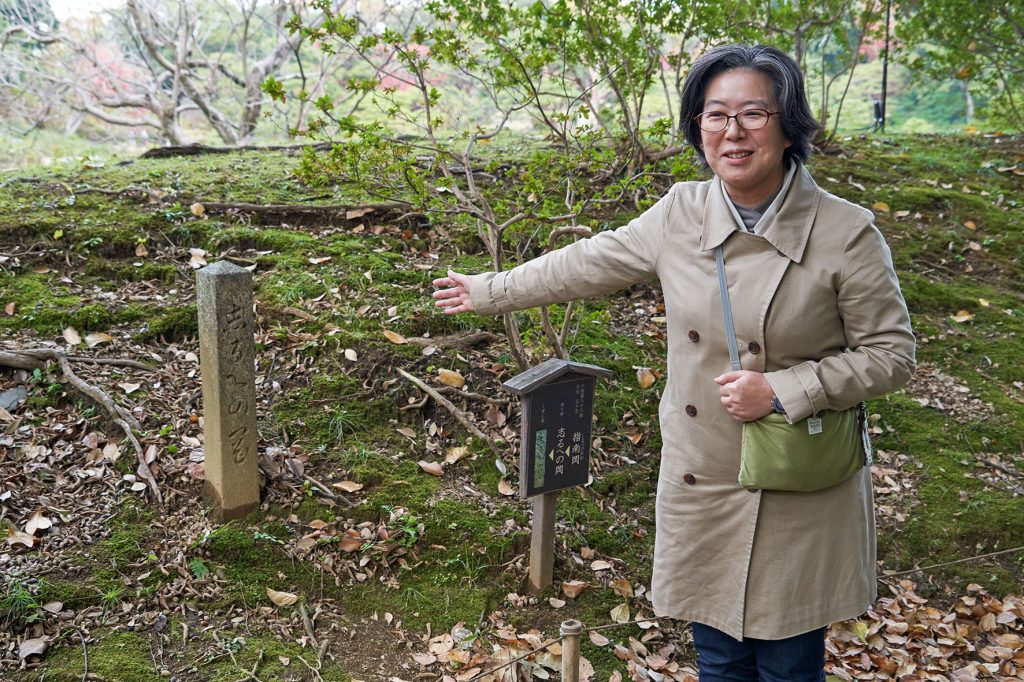
Throughout Rikugien, stone pillars mark locations that recreate landscapes celebrated in waka poetry. Originally, there were 88 of these sites but only 32 remain today. The earliest pillars have triangular tops, while the later reconstructed ones have flat tops. Some of these pillars are located in areas not open to the public, making it impossible to see all of them.
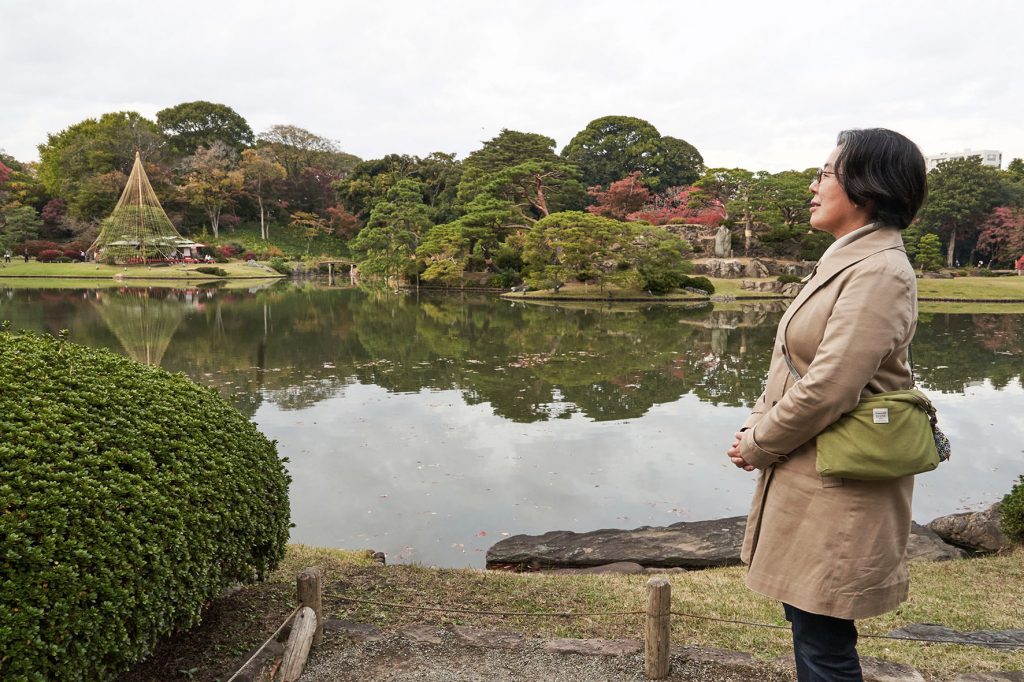
The “Rakushido Nenroku,” a chronicle of Yanagisawa Yoshiyasu’s life (1702, Collection of Public Interest Incorporated Foundation Koriyama-jo Shiseki Yanagisawa Bunko Hozonkai), includes a “Map of Rikugien.” For the 2013 special exhibition “Hanahiraku Edo no engei” (Flowers in Bloom: The Culture of Gardening in Edo), I visited Yamatokoriyama City in Nara Prefecture to view this document. The map indicates that twelve pines, each named after waka poetry, were planted in the garden. Today, only one remains—the “Fukiage-no-Matsu” (Fukiage Pine) near the Fukiage-chaya teahouse. The passage of time has erased the others.
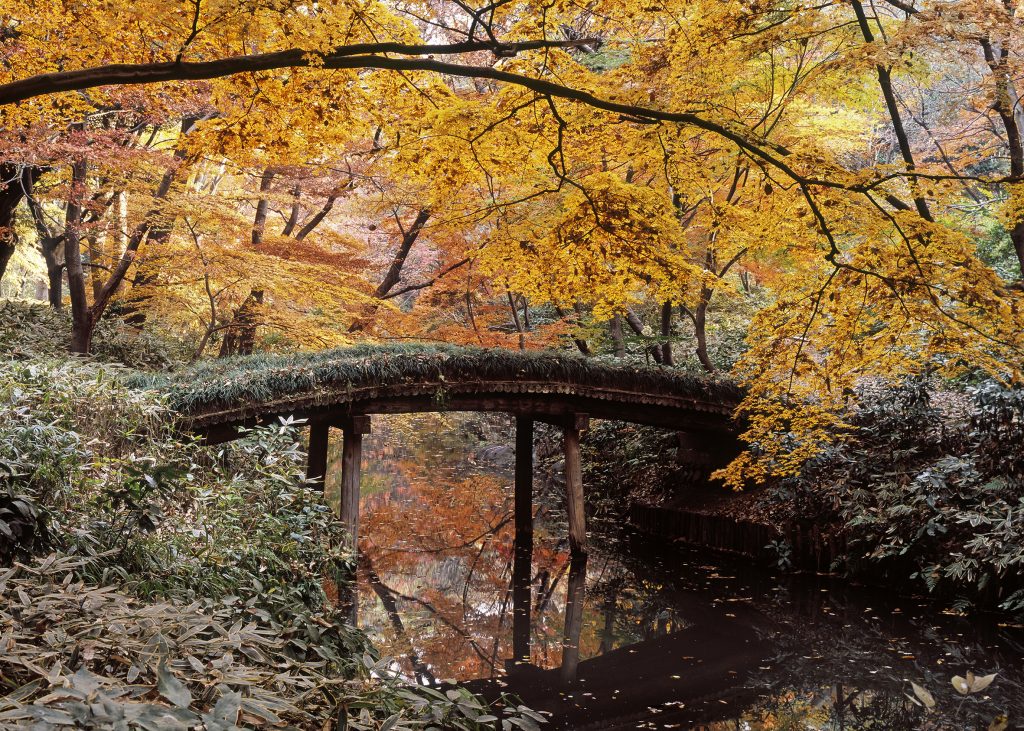
From “Tokyo Vintage Gardens”
To fully appreciate Rikugien, it may be helpful to explore it with someone knowledgeable about waka poetry or familiar with the Wakanoura region (in Wakayama). However, there are the large number of 88 sites, and the poems referenced do not originate from a single anthology.
Near the entrance, an informational panel introduces some of the scenic locations, serving as a helpful guide. As you wander the paths of Rikugien, let the stone pillars be your markers, leading you through landscapes immortalized in waka poetry.
A serene daimyo garden
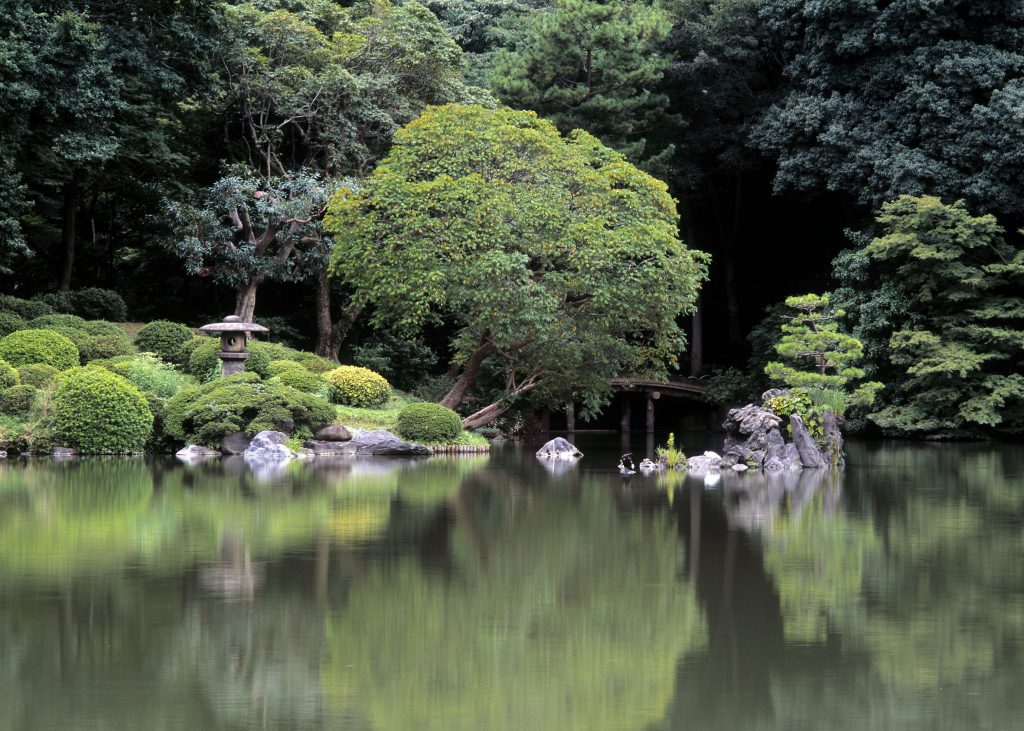
From “Tokyo Vintage Gardens”
Rikugien, along with Koishikawa Korakuen, is regarded as one of Edo’s two great gardens. Both are strolling gardens featuring artificial hills and ponds. However, they differ in character: Koishikawa Korakuen is designed with striking contrasts, making use of the natural elevation along the Kanda River, while Rikugien is composed of soft, rounded contours that create a gentle, harmonious atmosphere. Despite their contrasting styles, both follow the same garden design principles.
Another distinctive feature of Rikugien is its red pines, which stand out more than black pines. While black pines have dark, rugged bark, red pines have a reddish hue and a lighter, more delicate appearance, lending the garden an airy brightness. It is unclear whether red pines were originally planted here during the Edo Period, but they certainly complement the lyrical ambiance of waka poetry.
Through lectures with “Edo-Haku Culture” program and a series of Tokyo Art Navigation, I have come to appreciate that no two Japanese gardens are truly alike. At first glance, they may seem similar, but the arrangement of water, stones, and plants—and the impressions they evoke—differ greatly depending on the owner’s taste and vision. Understanding these nuances makes the experience of exploring gardens all the more fascinating.
Japanese original text: Yasuna Asano
Translation: Kae Shigeno
Rikugien Gardens
Location: 6-16-3 Hon-komagome, Bunkyo-ku, Tokyo
Hours: 9:00 a.m.–5:00 p.m. (admission until 4:30 p.m.)
Closed: Year-end and New Year holidays
Admission: General 300 yen, 65 and over 150 yen
https://www.tokyo-park.or.jp/teien/en/rikugien/
Norihisa Kushibiki
Photographer. Born in Hirosaki City, Aomori Prefecture. After graduating from university, he worked in the fashion business before moving to Milan, Italy. While there, he met artists in a variety of fields and began taking photographs. After returning to Japan, he worked as a photographer, mainly in the commercial and editorial fields. He has shot many portraits of celebrities, including private photos of Giorgio Armani and Gianni Versace. He has continued to photograph gardens as his life’s work since serving as the official photographer of the nine Tokyo Metropolitan Gardens. Invited to participate in the 6th International Biennale of Photography in Italy. Selected for the 19th International Biennial of Graphic Design Brno (Czech Republic).
Miho Tanaka
Curator at the Edo-Tokyo Museum. She was in charge of the special exhibition “Hanahiraku Edo no engei” (Flowers in Bloom: The Culture of Gardening in Edo). She has given lectures and commentaries on horticulture in the Edo Period and on the relationship between plants and people. She also gives a lecture, “Garden x Area Guide,” which discusses the origins of gardens in Tokyo from the characteristics of the surrounding areas.
For details about the lecture, visit the Edo-Tokyo Museum website:
https://www.edo-tokyo-museum.or.jp/en/event/other-venues-culture/


